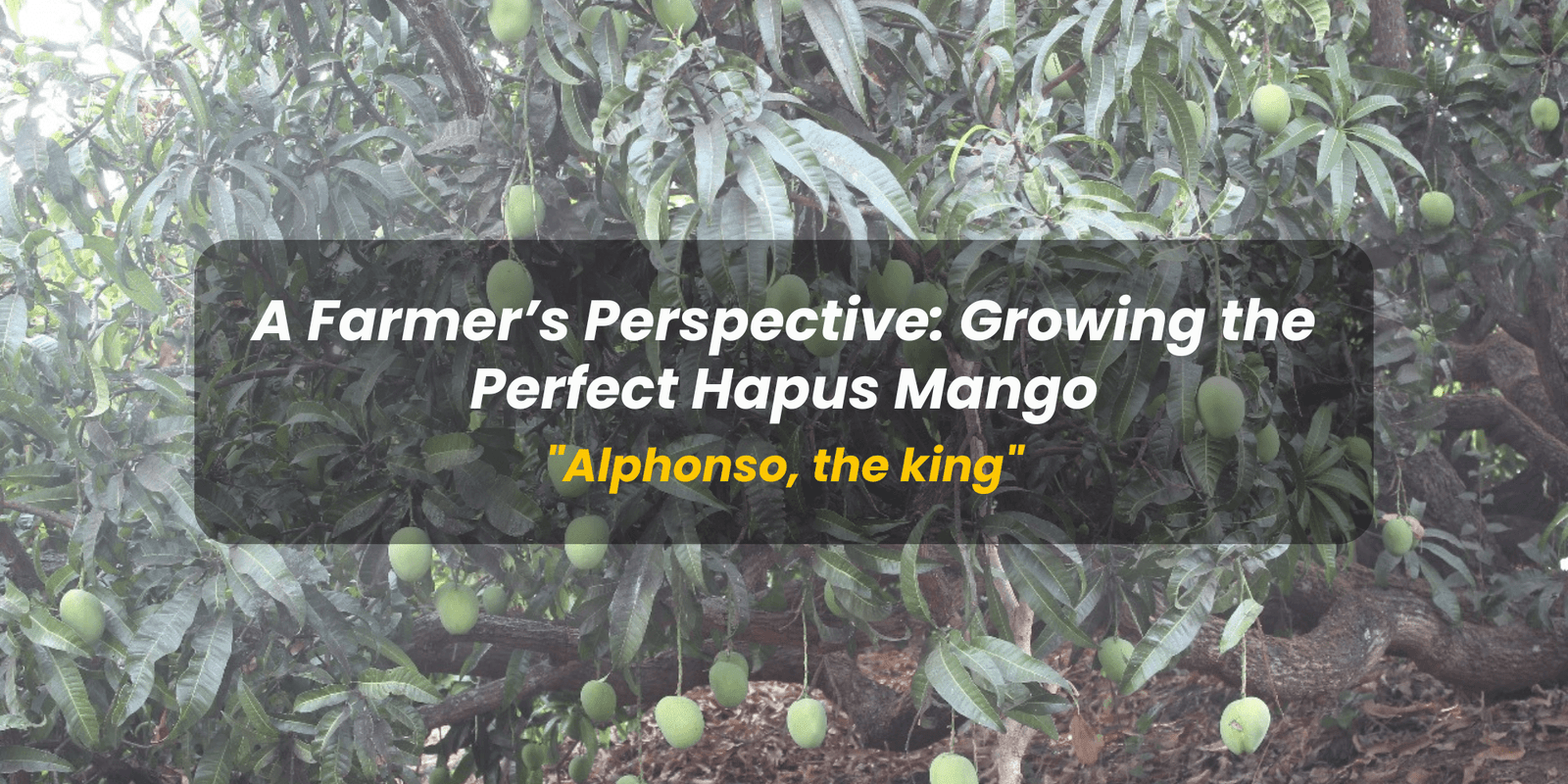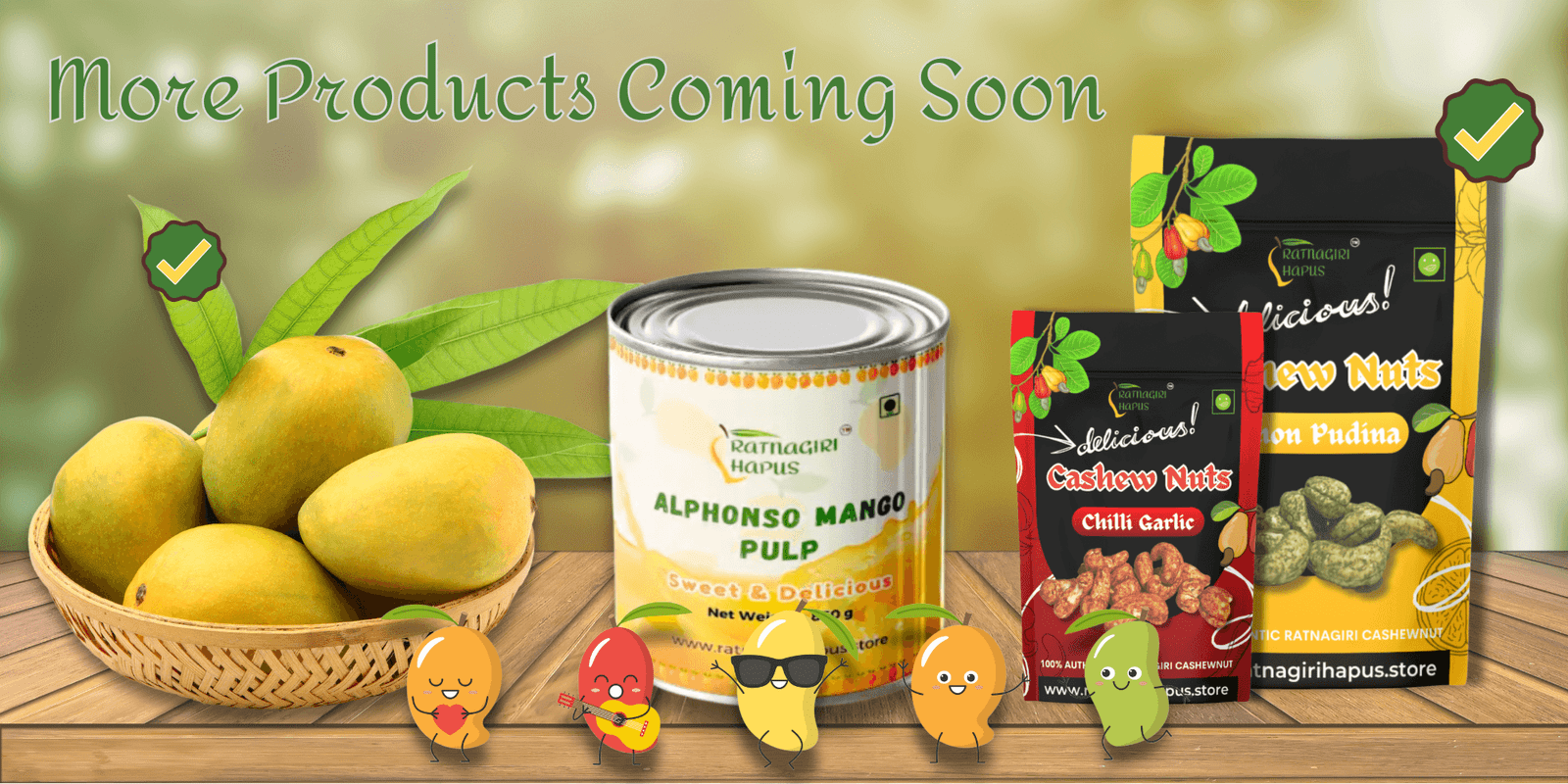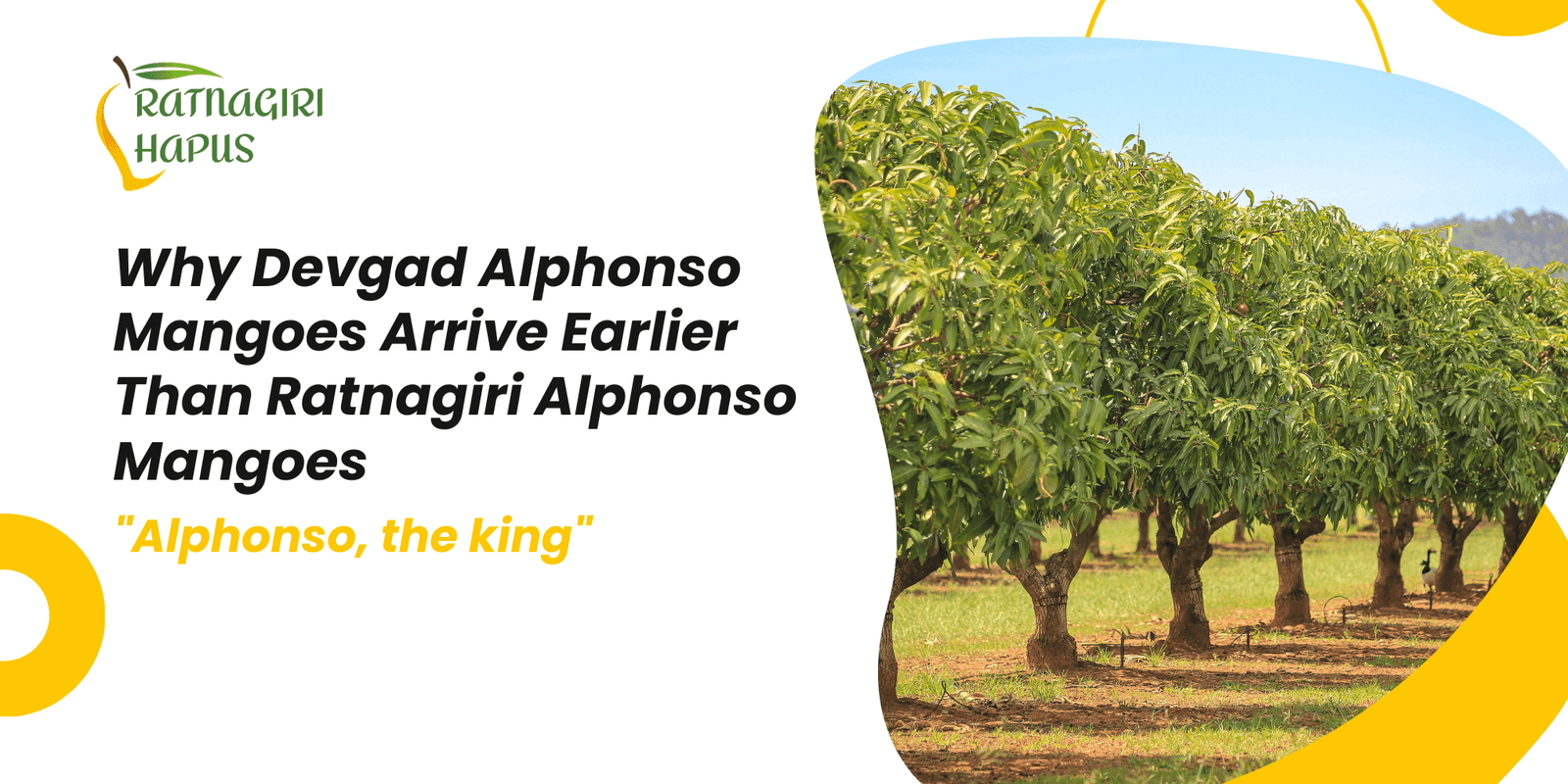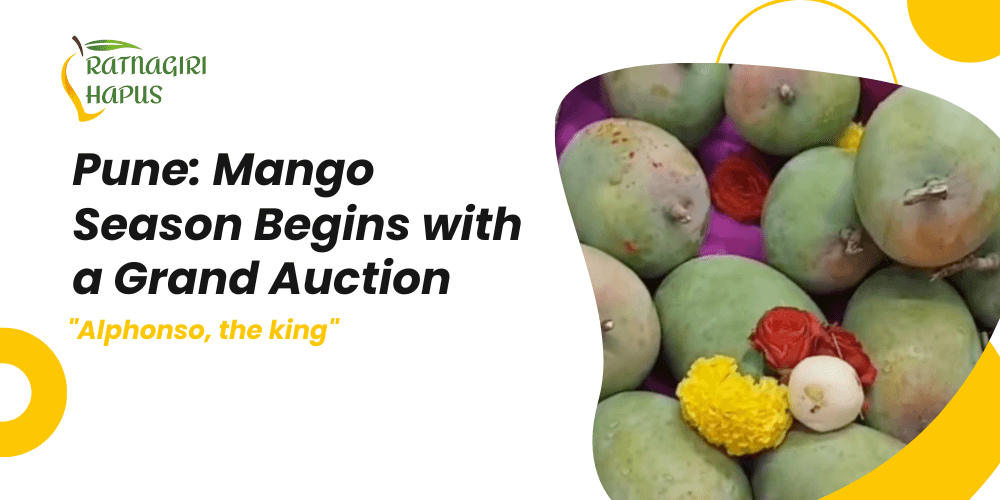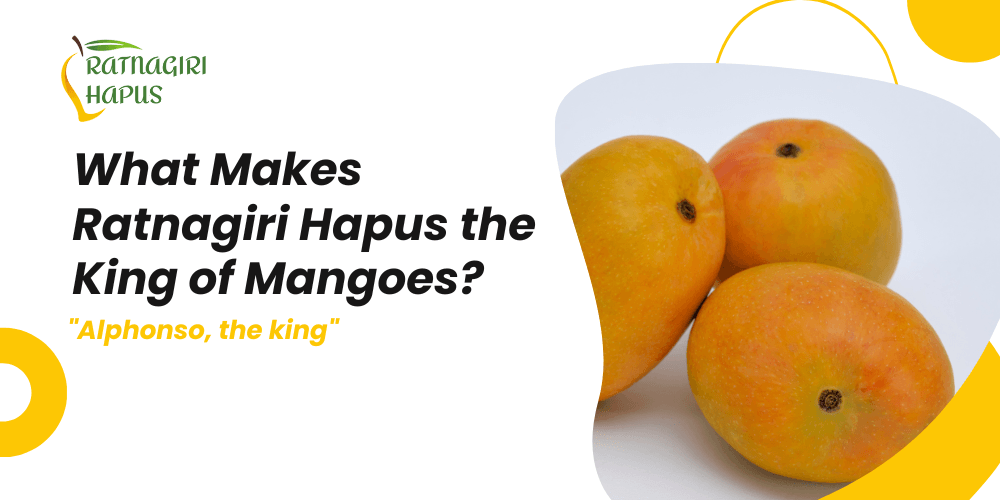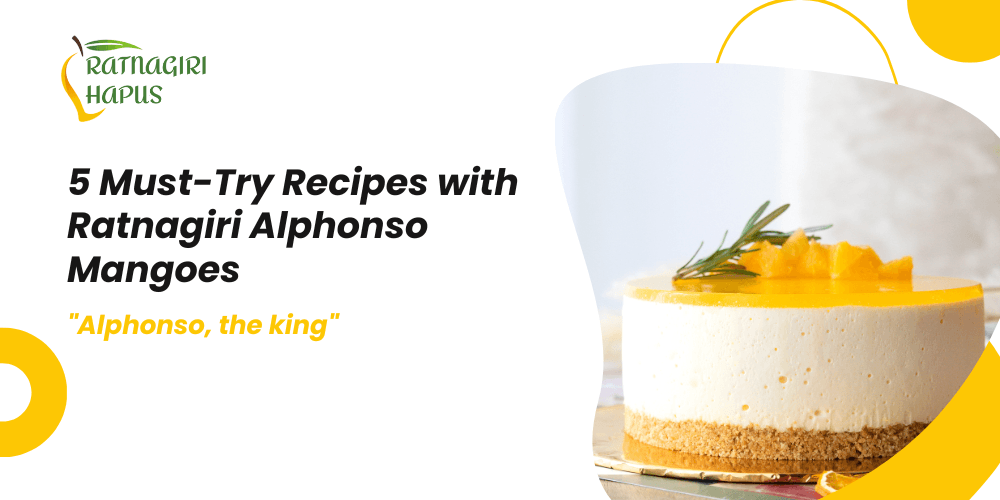
Ratnagiri Alphonso mangoes, often referred to as the “King of Mangoes,” are celebrated for their rich aroma, smooth texture, and unparalleled sweetness. Their versatility makes them a favorite ingredient in countless recipes. Whether you’re hosting a summer party or craving a refreshing dessert, these recipes will make the most of your Alphonso mangoes. 5 Must-Try Recipes with Ratnagiri Alphonso Mangoes in 2025
1. Alphonso Mango Smoothie Bowl
A vibrant smoothie bowl is the perfect way to start your day. Packed with nutrients and bursting with mango flavor, this recipe is both healthy and delicious.
Ingredients:
- 2 ripe Ratnagiri Alphonso mangoes (peeled and diced)
- 1 frozen banana
- 1/2 cup Greek yogurt
- 1/2 cup almond milk (or your choice of milk)
- Toppings: granola, fresh berries, chia seeds, and sliced mango

Instructions:
- Blend the mangoes, frozen banana, yogurt, and almond milk until smooth and creamy.
- Pour the smoothie into a bowl.
- Top with granola, fresh berries, chia seeds, and mango slices for a delightful crunch and extra flavor.
2. Mango Salsa
This tangy and sweet mango salsa is a refreshing side dish or dip that pairs wonderfully with chips, grilled fish, or chicken.
Ingredients:
- 2 ripe Alphonso mangoes (diced)
- 1 red bell pepper (diced)
- 1/2 red onion (finely chopped)
- 1 jalapeño (seeded and finely chopped)
- Juice of 1 lime
- 2 tbsp fresh cilantro (chopped)
- Salt and pepper to taste
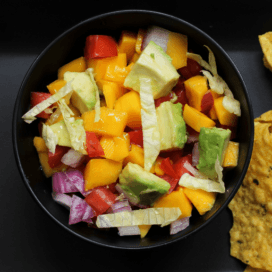
Instructions:
- Combine all the ingredients in a large bowl.
- Mix well and adjust seasoning as needed.
- Serve immediately or chill for 30 minutes to let the flavors meld.
3. Alphonso Mango Cheesecake
This no-bake cheesecake highlights the creamy texture and sweetness of Alphonso mangoes, making it a showstopper dessert.
Ingredients:
- 1 cup crushed digestive biscuits
- 4 tbsp melted butter
- 250g cream cheese (softened)
- 1/2 cup powdered sugar
- 1 cup whipped cream
- 2 ripe Alphonso mangoes (pureed)
- Mango slices for garnish

Instructions:
- Mix the crushed biscuits and melted butter. Press the mixture into the base of a springform pan and chill for 15 minutes.
- Beat the cream cheese and powdered sugar until smooth. Fold in the whipped cream and mango puree.
- Pour the mixture over the biscuit base and smooth the top.
- Refrigerate for 6 hours or until set. Garnish with mango slices before serving.
4. Mango Lassi
A classic Indian drink, mango lassi is a creamy and refreshing beverage perfect for any time of day.
Ingredients:
- 2 cups diced Alphonso mangoes
- 1 cup plain yogurt
- 1/2 cup milk
- 3 tbsp sugar (adjust to taste)
- A pinch of cardamom powder
- Ice cubes

Instructions:
- Blend the mangoes, yogurt, milk, sugar, and cardamom powder until smooth.
- Add ice cubes and blend again.
- Serve chilled and garnish with a sprinkle of cardamom powder or chopped pistachios.
5. Mango Sticky Rice
This Thai-inspired dessert pairs the sweetness of Alphonso mangoes with creamy coconut-flavored sticky rice.
Ingredients:
- 1 cup glutinous rice
- 1 1/2 cups coconut milk
- 1/4 cup sugar
- 1/4 tsp salt
- 2 ripe Alphonso mangoes (sliced)
- Sesame seeds for garnish
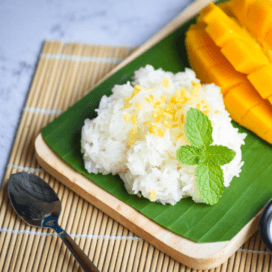
Instructions:
- Rinse the rice thoroughly and soak it in water for 30 minutes. Cook the rice as per the package instructions.
- In a saucepan, heat the coconut milk, sugar, and salt until the sugar dissolves. Do not boil.
- Pour half of the coconut mixture over the cooked rice and mix well. Let it sit for 20 minutes.
- Serve the sticky rice with mango slices and drizzle the remaining coconut sauce on top. Garnish with sesame seeds.
Conclusion
Ratnagiri Alphonso mangoes bring a burst of flavor and a touch of luxury to any dish. These five recipes are just the beginning of what you can create with this extraordinary fruit. Whether you’re savoring a creamy cheesecake or refreshing your palate with a mango lassi, Alphonso mangoes will elevate your culinary adventures.
Order your batch of Ratnagiri Alphonso mangoes today and start experimenting with these delightful recipes!
5 Must-Try Recipes with Ratnagiri Alphonso Mangoes



